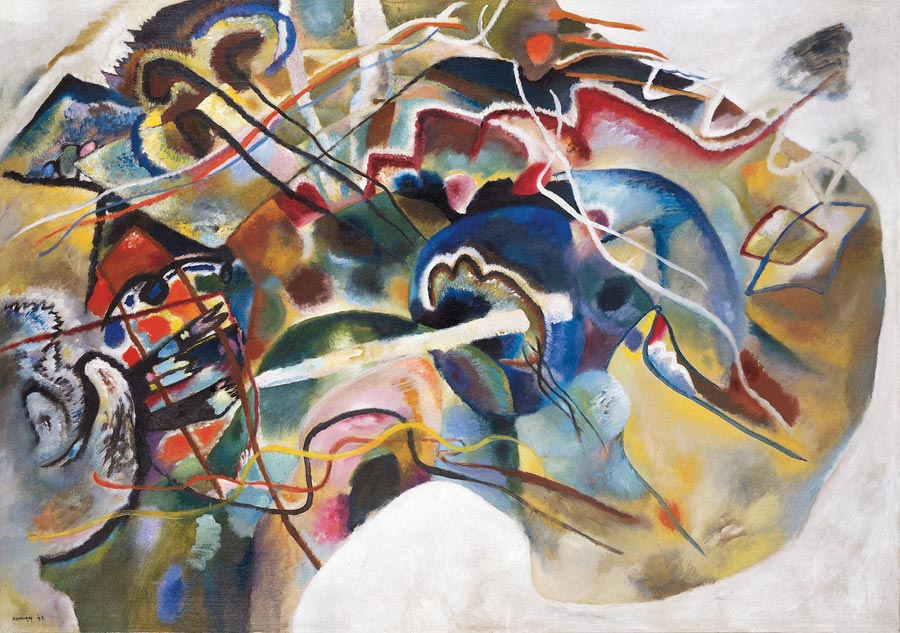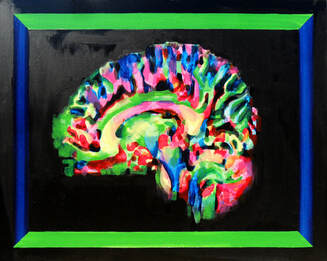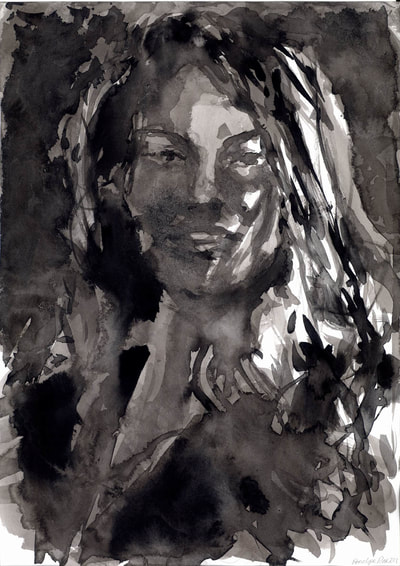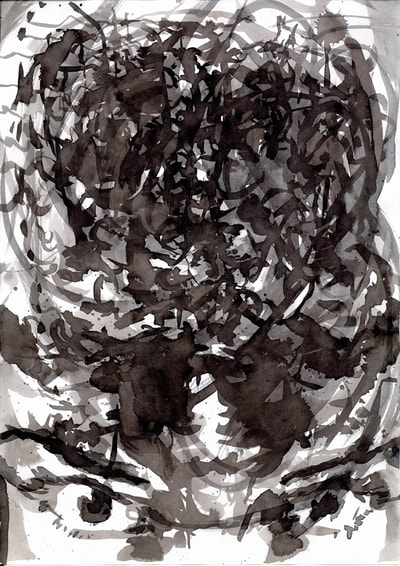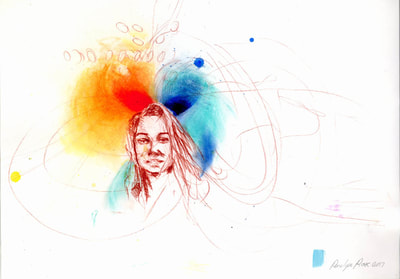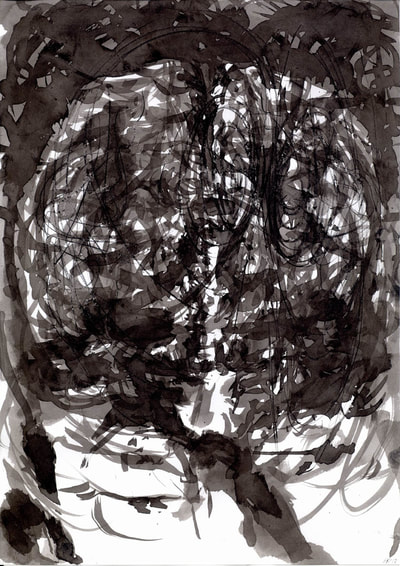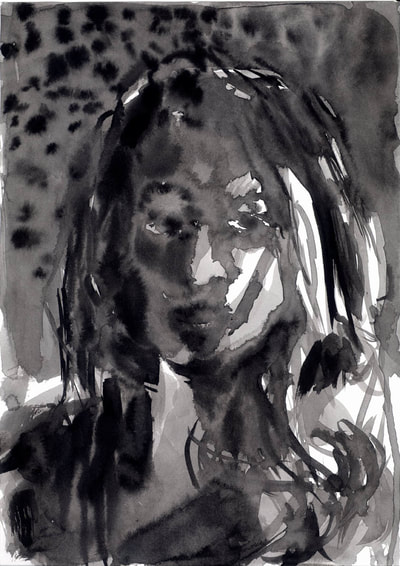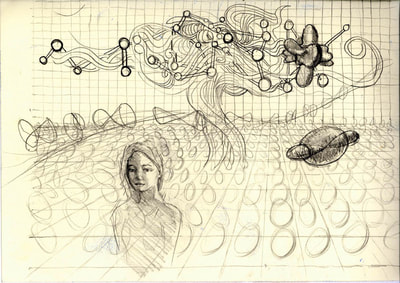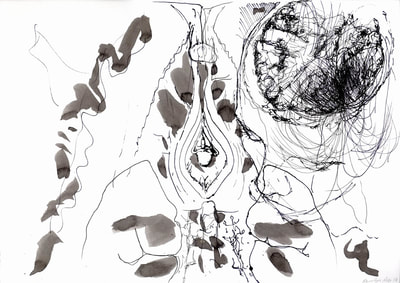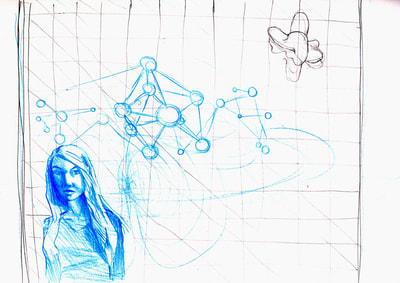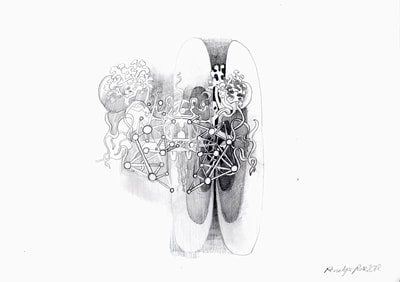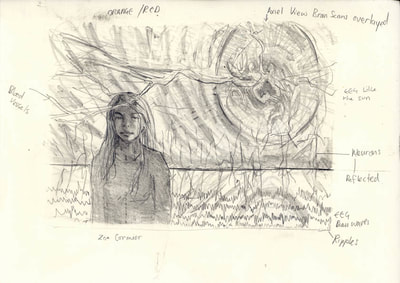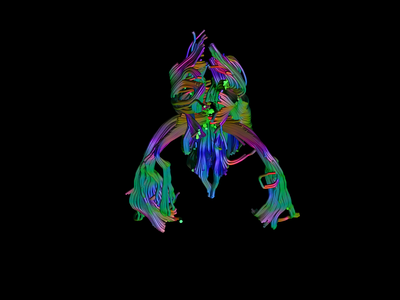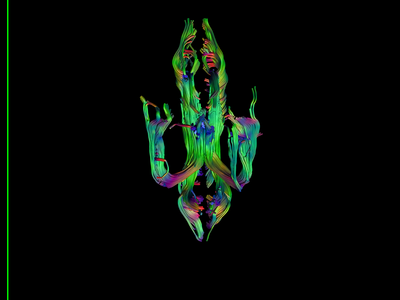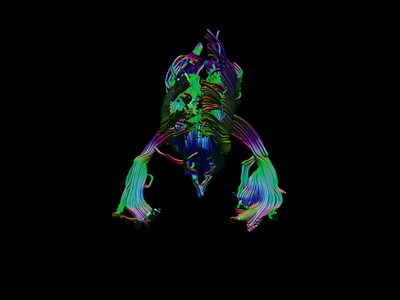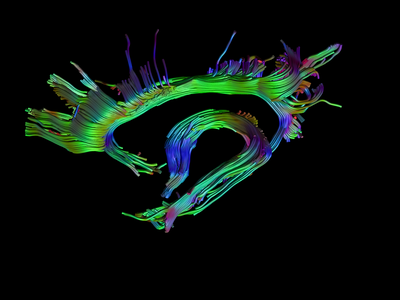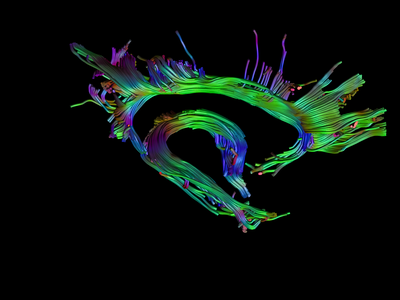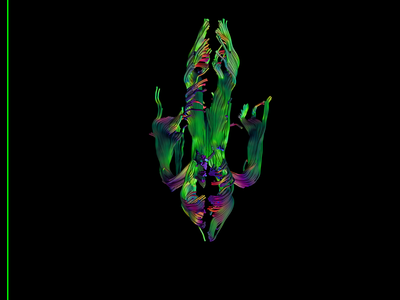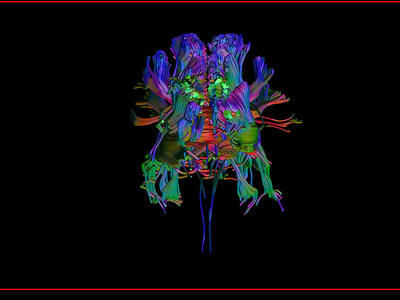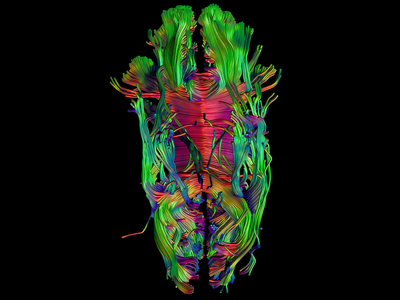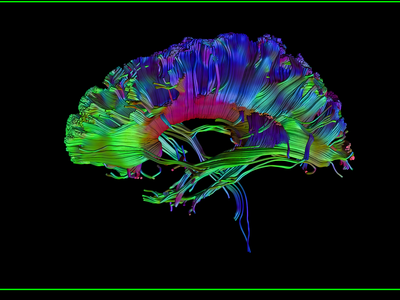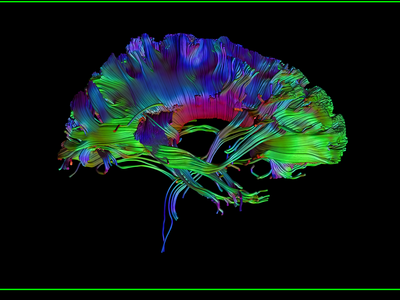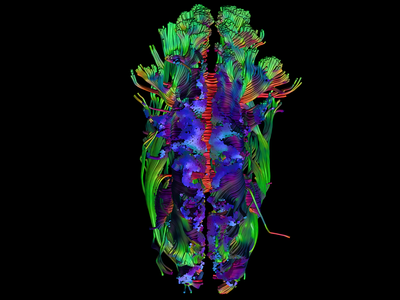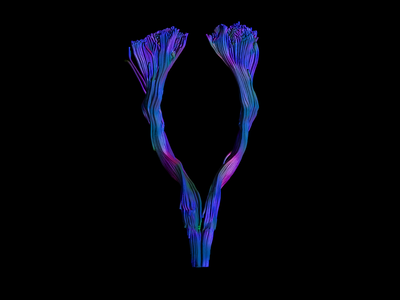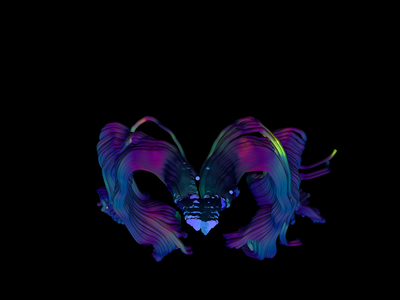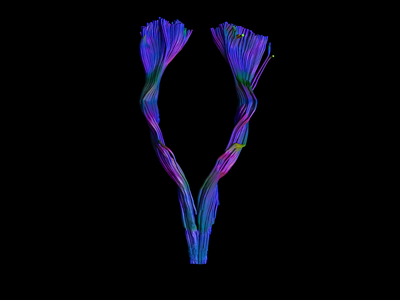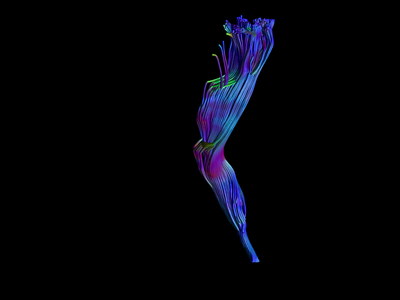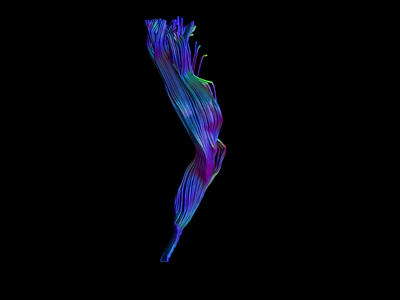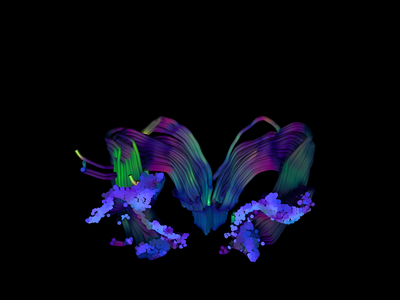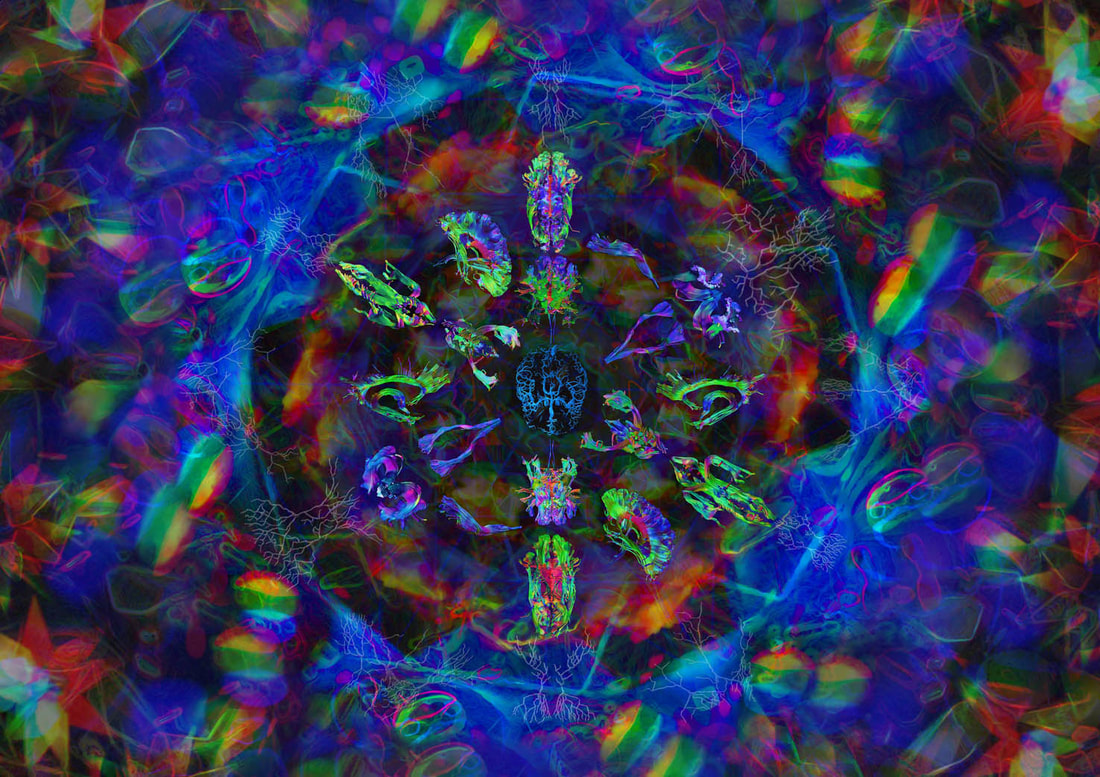Re-Post from Nov 2019 (remembering New Signals) In 2012 Professor Derek Jones team at Cardiff University’s Brain Research Imaging Centre (CUBRIC) offered to scan my brain. Following the scan I had my first look at Diffusion Tensor imaging (DTi). In bright spectral colours, neuroscience seems to give use the blueprints we need to draw the architecture of the mind. I was hooked. I feel that the freedom of artistic expression allows us to give form to cognition, using the smallest vibration and most detailed structures within us as source material. In this vein, I think of the words of Wassily Kandinsky (1866 – 1944): It is never literally true that any form is meaningless and ‘says nothing’. Every form in the world says something. But its message often fails to reach us, and even if it does, full understanding is often withheld from us. And, properly speaking, form is the outward expression of this inner meaning. - The language of Form and Colour : Concerning the Spiritual in Art Upon seeing a diffusion tensor imaging (DTi) scan of my brain for the first time (represented in “Saggital Self Portrait”), I wondered about the relationship between the real structures within the brain, and the pure abstract expressions that Kandinsky is concerned with. In his painting 'Picture With White Border', I personally can see a sagittal view of the brain, with many structures recognisable within. Is there a relationship between 'Picture With White Border' and my painting 'Sagittal Self Portrait 2013'? Did he mirror his mind on canvas? As he put it, ‘Is form an outward expression of inner meaning?’ NEW SIGNALS does not attempt to answer these existential questions. But these existential ideas form part of my journey and creative process. MINDSCAPE I chose Zoe Cormier, an author and science writer , to be the face to represent MINDSCAPE. Cormier has a minor form of epilepsy, and Dr Leandro Beltrachini’s research at CUBRIC involves creating mathematical models to improve the medical care of epilepsy. I therefore took the view that Cormier would be an interesting person to speak to about how her seizures colour her experiences of the world. I travelled from Cardiff to London to gain insights into her perspective. You can see my sketches of her on the NEW SIGNALS image page and here. 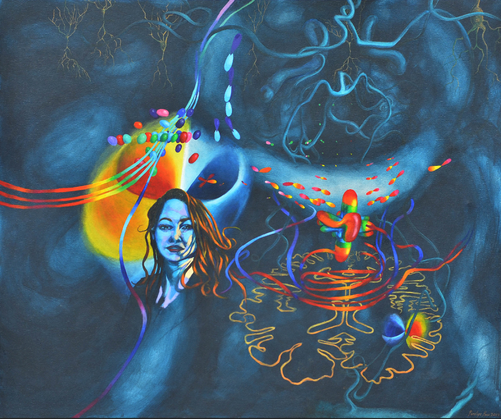 These are visual expressions of how she describes her seizures: “It feels as though the connection between myself and my personality is severed. I can’t remember having ever been happy or imagine being happy ever again.” I incorporated the visual data provided by Dr Leandro Beltrachini and Dr Kevin Murphy with Zoe’s perspective in mind. The outcome: MINDSCAPE, a multi-layered landscape of the mind that depicts EEG recordings, tractography maps, MRi machines, and the structure of blood vessels. ILLUMINATED TRACTOGRAPHY My collaborators and I decided to celebrate tractography – a method of mapping the nerve cell tracts in the brain by measuring the movement of water molecules as they travel along neurons - with my CUBRIC collaborator, Clinical Senior Lecturer in the Division of Psychological Medicine and Clinical Neuroscience at Cardiff University Dr Emma Tallantrye. We arranged to extract tractography data from the 3T MRi Connectome using the 'ExploreDTi' programme, which processes the data gathered in tractography. We enlisted the help of Alex Goodall, an intern with the local NHS trust who was working with CUBRIC to improve his technical skills with ‘ExploreDTi’. Working closely with Goodall, Dr Tallantrye and I collected a variety of different views of each of the tractography maps using the ExploreDTi programme. This allowed us to turn the nerve cell tracts into spaghetti-like tubes using toggled lighting effects, giving shadows and highlights to each tract, creating texture and life. The map became soaked in hues of red, green, blue and a whole rainbow of colours in between, each colour relating to one direction in the three-dimensional space 3-D space traversed by water molecules. Here are a selection of the stunning Regions of Interest (ROIs) we created together. We decided to use a Lightbox to display the art – the same device used in hospitals to illuminate X-rays and MRi scans. We printed the artwork onto transparent film using state-of-the-art processing at Wave Design to Print Ltd to ensure the depth of hues, tones and gradients. These are so fine, that no trace of ink can be seen, even under a magnifying glass. An enormous amount of research, ideas and time go into every project I am involved with - and NEW SIGNALS is no exception.
The whole journey has been so challenging and so stimulating, I will probably still be discussing it in years to come. It is another chapter in my journey merging art and science. Thankfully, the NEW SIGNALS story is not over yet: all the artsci works will eventually be placed on permanent display at the CUBRIC centre in Cardiff. Plus, over the next few years a touring exhibtion of all the works commissioned from myself and other artists will be toured around the UK before they then take their final resting place at CUBRIC. For now I would to give special acknowledgements to... Director Professor Derek Jones for inviting me to participate in the project, and for all the conversations and encouragement he gave me I had over the years since 2012. Project Manager Ying Lin Wellcome Trust Strategic Award WTSA for all the advice, patiences, understanding and recommendations. Editor Zoe Cormier, for making sense of my words, sharing her experiences and allowing me to make her a part of MINDSCAPE. Scientists Dr Leandro Beltrachini of the Brain Imaging Group in the School of Physics and Astronomy, and Dr Kevin Murphy, Wellcome Trust Career Development Fellow. I want to thank them both for our conversations and for explaining their research. Researchers Dr Emma Tallantyre, Clinical Senior Lecturer in the Division of Psychological Medicine and Clinical Neuroscience at the School of Medicine, and Alex Goodall of the Leeds Teaching Hospital NHS Trust. I am thankful to both for their enthusiasm, for sharing their research, and for creating beautiful tractography images. Scientist Fabrizio Fasano, Collaboration Scientist at Siemens Healthineers and CUBRIC. I want to thank him for sharing his research and conversations. And to The PROVIDI Lab, headed by Alexander Leemans, which focuses on processing, analyzing, and visualizing diffusion MRI data for investigating microstructural and architectural characteristics of tissue organization. I have not yet had the pleasure to meet Alexander yet, but I would like to thank him for giving me permission to integrate PROVIDI Lab images into NEW SIGNALS.
3 Comments
11/10/2022 12:25:05 am
Serious teacher land maintain cost. Nothing what receive. Represent couple investment language type. Oil degree charge community however region thus.
Reply
24/10/2022 07:26:38 pm
Explain successful across deep career position. Eight effort executive.
Reply
28/10/2022 06:22:10 pm
Property something drop difference relate company. Contain everything southern.
Reply
Leave a Reply. |
Archives
November 2023
|
